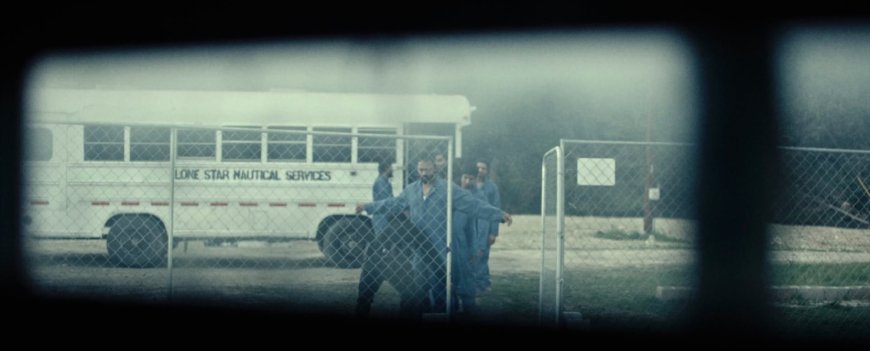A group of migrant labourers from India is at the centre of Sachin Dheeraj Mudigonda's short film, Men in Blue. They have also been lured to a better-paying job in the US by a middleman. Now they are forced to suffer the fate of servitude. The story of the film is woven around the testimonies of a real-life incident in Texas and New Orleans after Hurricane Katrina. The narrative focuses on the hardship and inhumane behaviour that the labourers had to face daily. It showcases how sometimes retaliation against the oppressive system is the only means to earn back the lost dignity. The film deftly touches upon the issues of migration, family, and the hidden reality behind a falsely guaranteed dream and livelihood.
George is an immigrant from Kerala who lives in the small and cramped quarters of the shipping company. There are other Indian men like him who live under such pathetic conditions. All of them are victims of human trafficking. The shipping company had made promises of a better future for them. But those were never fulfilled, and now they have to live a life of unending woes. George decides to secretly record the testimony of all the labourers on a camcorder. But one day, a police officer humiliates one of the labourers for a minor crime. Out of shame, the labourers take a fatal step. As a consequence, the rest of them rebel and transform into a force not to be reckoned with.
Mudigonda has made a film about a group of men that awakens us to something much larger, something that feels distressingly familiar. Though its title suggests a sense of identity for the labourers, the film forcefully, but subtly, nods toward a frightening permanency. With unflinching details, the filmmaker shows how systemic and pervasive the contemporary culture of slavery is rooted and ingrained globally. As the labourers record their testament, it becomes a brutally powerful and emotionally devastating film that takes great pains to rip away any lingering vestiges of romanticism. When a labourer is strip-searched, it spells out in unsparing detail exactly how shipping owners oversee and brutally maintain control over their employees. The smoke from the fumigation machine conveys resignation and slivers of hope that they might somehow escape this hell. As the labourers return to their quarters after toiling throughout the day, they sing together or play pranks on one another. They cheer each other up when India is on the verge of losing a match. These are the moments where the film intends to do more than tell us a story. It wants to immerse us in an experience, and it does. No film can recreate the unspeakable degradation that a group of humans have felt in their lives. But in making the attempt, Men in Blue insists we feel things in a particularly oppressive way. It is uncompromising in its commitment to exposing a tragic chapter in history that should not have occurred at all.
Antonythasan Jesuthasan as Vijayan Kumar gives an electrifying and engulfing performance. Manoj Pillai, as George Kutty, delivers a restrained, open, translucent performance that works as a ballast. Manoj Chandra, as Rafiq Ali, brings a powerful and emotional resonance to his character. The cinematography by Sebastian Jauregui extensively uses close-up shots and tight framing to capture the turmoil of the characters effectively. The sound design of Shreyank Nanjappa creates an aural space that gives us a feeling of claustrophobia, as felt by the labourers. Mudigonda, who has also edited the film, creates drama and tension with an absorbing pace. Though I felt that the film could have been shortened by ten minutes.
Men in Blue ends on a note of hope, and the labourers have unchained themselves. But their burden is felt long after the credits have rolled. Mudigonda and his ensemble cast take us on a difficult journey. A short odyssey that we find difficult to endure. It is to their great credit that our endurance is rewarded.















